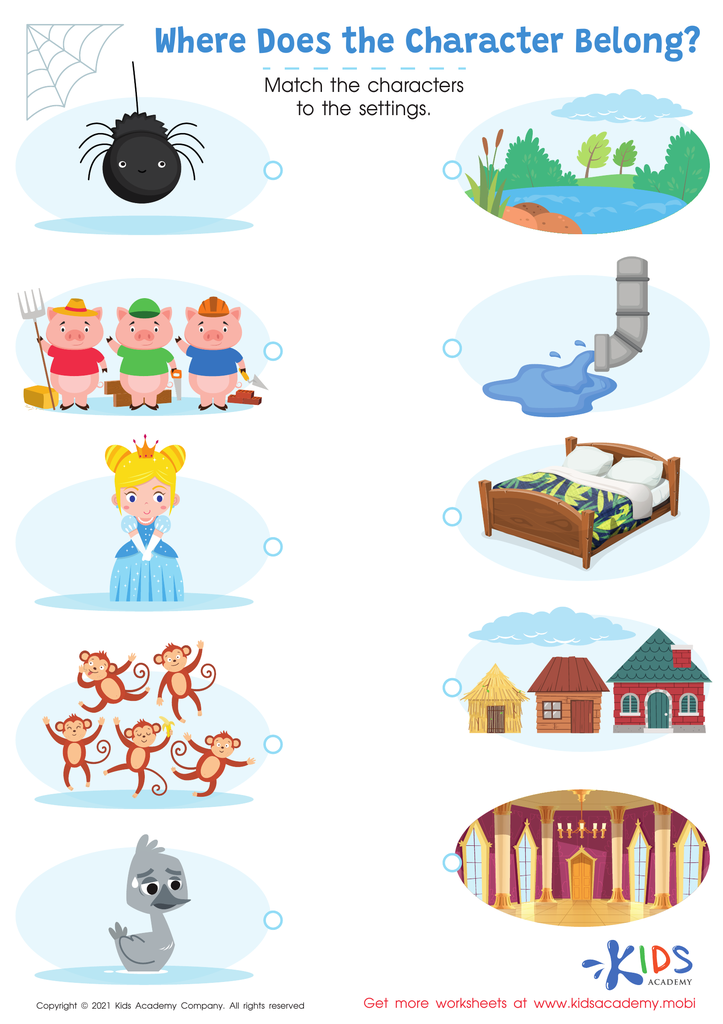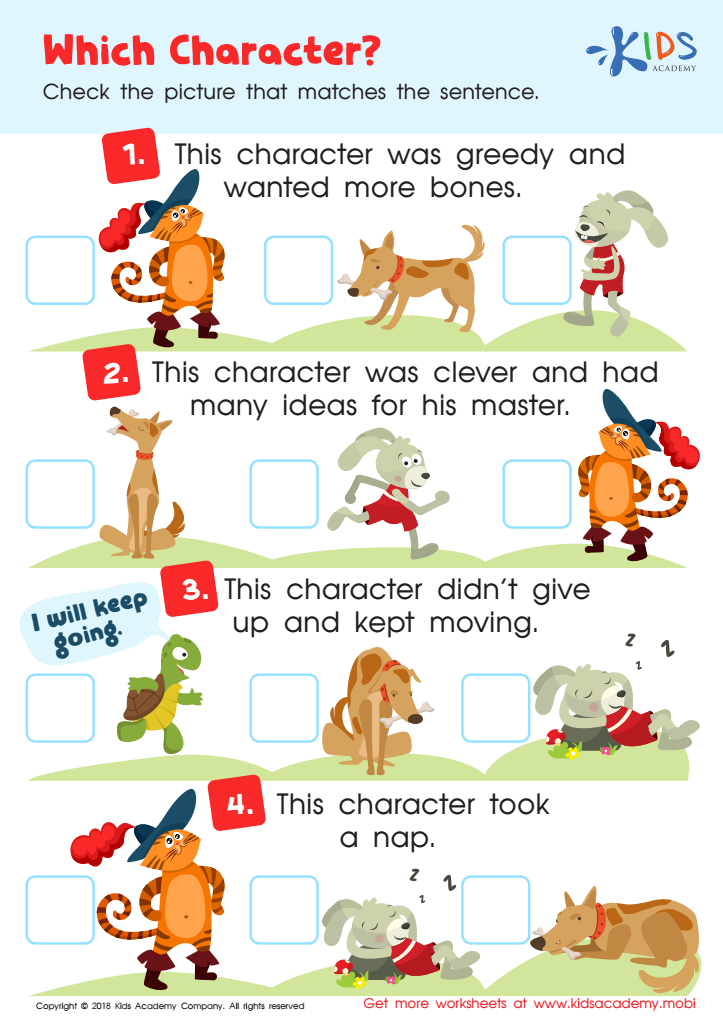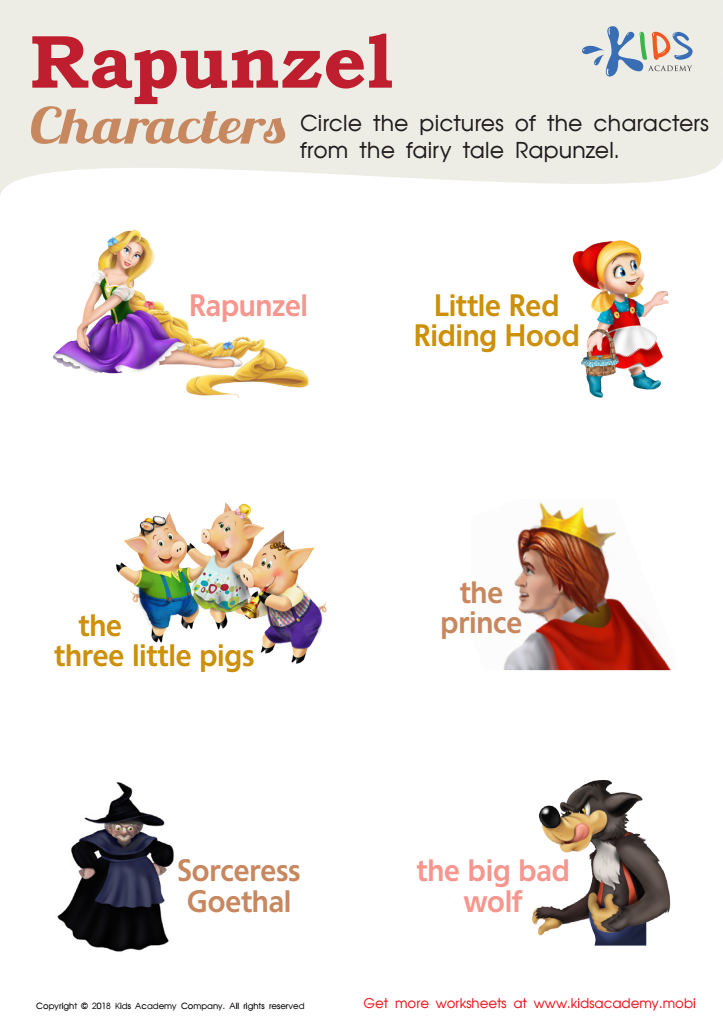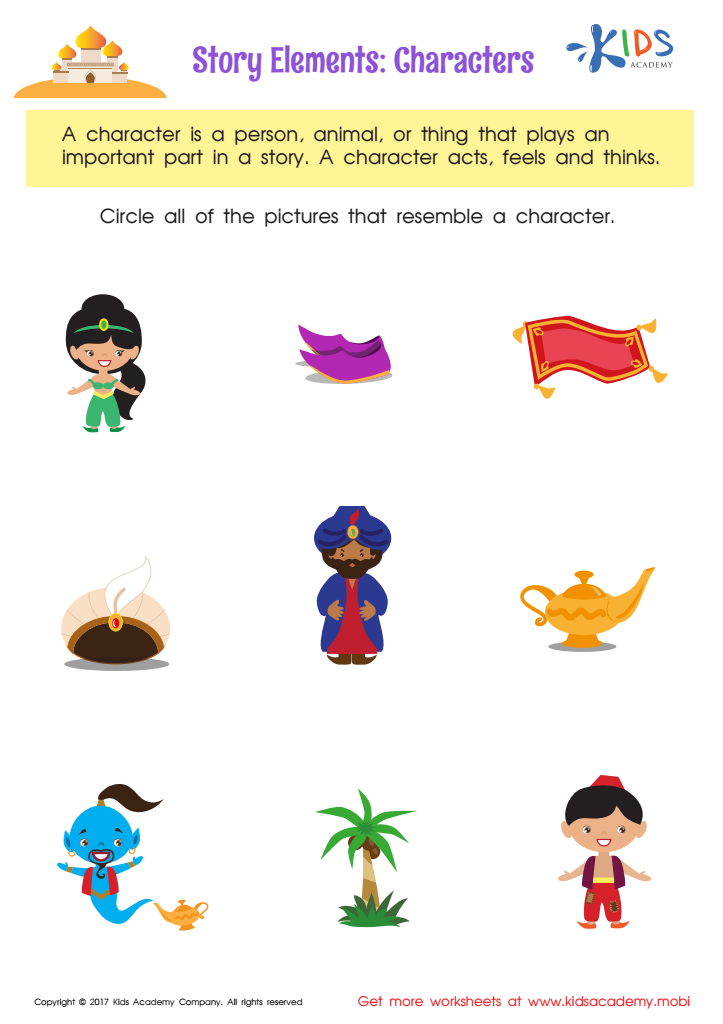Character recognition Reading Comprehension Worksheets for Ages 3-9
4 filtered results
-
From - To
Explore our engaging Character Recognition Reading Comprehension Worksheets designed for children aged 3-9! Our resources focus on enhancing early literacy skills by helping young learners identify and understand various characters in stories. Each worksheet combines fun activities with visual aids, making learning interactive and enjoyable. Teachers and parents can use these tailored materials to strengthen reading comprehension, promote critical thinking, and inspire a love for reading. Perfect for home or classroom use, our worksheets support the development of essential skills that pave the way for future academic success. Discover a world of characters and unlock your child’s potential in literacy today!


Where Does the Character Belong? Worksheet


Which Character Worksheet


Rapunzel Characters Worksheet


Story Elements Printable
Character recognition and reading comprehension are crucial developmental milestones for children aged 3-9. For parents and teachers, fostering these skills can significantly aid in a child's overall literacy development. Character recognition involves the ability to identify and understand letters and words, forming the foundation for reading. Mastering these skills enables children to decode text, which is essential for beginning readers.
Strong reading comprehension skills enhance a child's ability to understand and interpret text, leading to deeper engagement with stories and information. By recognizing characters in a story, children begin to grasp themes, plotlines, and character motivations, enriching their experience and critical thinking.
Furthermore, language development during these formative years is vital. When parents and teachers prioritize character recognition and comprehension, they empower children to express themselves better and communicate more effectively. This lays the groundwork for future academic success and fosters a lifelong love of reading.
In today's world, literacy is linked to broader life opportunities, such as academic achievements, employment prospects, and social skills. Thus, investing time and effort into developing these foundational reading skills is essential for fostering confident and capable learners.
 Assign to My Students
Assign to My Students




.jpg)











